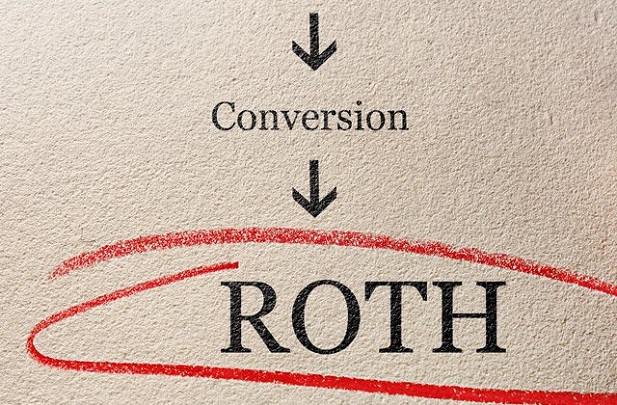
10. Avoid the No. 1 mistake: Not checking beneficiary forms.
Check these for every plan, IRA, annuity and life insurance policy. There's been lots of transition just over the past two years. Plans may have changed. Ask clients about events in their lives like deaths, marriages, divorces, remarriages, births (new grandchild), change in tax laws. We've had it all. Beneficiary forms must be reviewed and updated.For example, after the Secure Act eliminated the stretch IRA for most non-spouse beneficiaries, clients who named a trust as their IRA beneficiary will likely find that this plan won't work anymore. Always check beneficiary forms. If a beneficiary is disinherited (which often happens after a divorce when the beneficiary form isn't updated), then that is the same as a 100% tax. You don't want to be there when this happens, especially if it happens on your watch!
(Image: Shutterstock)

1. Follow up on IRA and 401(k) transactions like rollovers, Roth conversions and backdoor Roths.
Make sure the funds actually got to the correct destination. We are seeing lots of errors here, maybe due to shortages of staff at financial institutions, clicking the wrong account online, or sloppiness. This will probably get even worse in a week or so as more staff might be taking time off for the holidays. Many of these transactions are just not followed up on. If they don't go to the right place it can be a real mess trying to fix up later after the year has ended and the tax reporting is already set in stone.In a recent case, Roth 401(k) funds were erroneously deposited in a traditional IRA, which you cannot do, and you would never want to do anyway. These funds were already taxed! They were supposed to be rolled over to a Roth IRA but they went to the wrong IRA. The financial advisor never followed up. The client ended up requesting this expensive [private letter ruling] from IRS for relief. The PLR fee alone was $10,000, on what should have been a tax-free rollover.
(Image: Shutterstock)

2. Follow up on 60-day rollovers.
Were the funds deposited within 60 days? This includes Roth conversions.Follow up on backdoor Roth transactions. The first step in the process is to make a contribution to a traditional non-deductible IRA and then convert those funds to a Roth IRA. Were the funds ever converted? Included in the recent tax proposals is a provision to eliminate both the backdoor Roth and the mega backdoor Roth after this year, so if your clients want this, they should get this completed before year end.
(Image: Shutterstock)

3. How much will that Roth conversion cost?
Help clients with accurate tax projections. Most of the 2021 income is known by now, so you'll be able to get a better estimate of what the tax bill might be on a 2021 Roth conversion. It's good to get the CPA or other tax preparer's input on this. To qualify as a 2021 Roth conversion, the funds must leave the IRA before year-end.Check the effect of a Roth conversion on Medicare IRMAA surcharges too. Remember there is a 2-year lookback on these.
Contact clients who lost a spouse this year. Next year the survivor will likely be filing single, increasing their tax bill. Consider a Roth conversion before year-end to get the income into the final joint tax return.
(Image: Shutterstock)

4. Don't forget business income when planning Roth conversions.
When calculating income, make sure to include any business income (or losses) from clients with pass-through income from S-Corps, LLCs, partnerships and Schedule C income.Check if the planned Roth conversion might affect eligibility for the 20% QBI (qualified business income) deduction. A Roth conversion could push income over the limits and knock out the deduction, or in some cases, where taxable income is low, a Roth conversion could increase the QBI deduction.
(Image: Shutterstock)
Advertisement

5. Take those RMDs!
They're back. The CARES Act waived required minimum distributions, but only for 2020. Make sure your clients have taken their 2021 RMDs. We are still hearing from people who think this RMD waiver still applies. It doesn't. Not only that, many clients' 2021 RMDs may be higher since no funds had to be withdrawn last year, plus the market was up last year. Make sure they have enough tax paid in wither through estimates or withholding to cover the tax bill.(Image: Shutterstock)

6. Make sure heirs take RMDs if needed.
Take note of which beneficiaries will be subject to RMDs. There are two payout schedules to keep track of for non-spouse beneficiaries like children, grandchildren and trusts. Beneficiaries who inherited before 2020 can still use the stretch IRA. They simply resume their schedule. The 2020 waiver has no effect.Beneficiaries who inherited in 2020 or later will likely be on the 10-year rule. No funds have to be withdrawn until the end of the 10th year, but if tax rates are low this year, it might pay to withdraw some funds this year (but not from inherited Roths, since those are tax-free).
(Image: Shutterstock)

7. Net unrealized appreciation tax planning for lump-sum distributions.
The combination of a red-hot stock market in 2021 and retirements may make 2021 a banner year for those clients who qualify for the NUA tax break. This can turn what would otherwise be ordinary income into preferable long-term capital gains.This applies to those with company stock in their 401(k). If they have a triggering (qualifying) event such as separation from service or reaching age 59 ½ (or death or disability) they can take a lump-sum distribution and only pay tax on the cost of the stock when acquired in the plan. The stock would be transferred in kind (as stock) to a taxable brokerage account.
Other non-company stock plan assets can be rolled over to an IRA tax free. The tax on the cost of the NUA stock will be at ordinary tax rates, but the appreciation will be taxed at long-term capital gain rates, but only after the stock is sold.
(Image: Shutterstock)

8. Consider qualified charitable distributions.
Most clients get no tax benefit from their charitable gifts, because most taxpayers use the higher standard deduction.QCDs provide a better tax break, by allowing direct gifts from IRAs. The distribution is excluded from income and can satisfy an RMD. But the QCD break is only available to IRA owners and IRA beneficiaries who are age 70 ½ or older. It's limited to $100,000 per year, per person. Donor-advised funds don't qualify for QCDs or Mega QCDs.
(Image: Shutterstock)

9. Ending soon: Mega QCDs.
This break ends this year. Last year's stimulus act increased the deduction limit for cash contributions to 100% of AGI. This can allow a large distribution from an IRA or 401(k) to raise AGI and allow a larger contribution deduction. This can work for those who don't qualify for the QCD, or those who wish to give more than the $100,000. Don't do this before age 59 ½ or it could trigger a 10% early distribution penalty.(Image: Shutterstock)
Advertisement

10. Avoid the No. 1 mistake: Not checking beneficiary forms.
Check these for every plan, IRA, annuity and life insurance policy. There's been lots of transition just over the past two years. Plans may have changed. Ask clients about events in their lives like deaths, marriages, divorces, remarriages, births (new grandchild), change in tax laws. We've had it all. Beneficiary forms must be reviewed and updated.For example, after the Secure Act eliminated the stretch IRA for most non-spouse beneficiaries, clients who named a trust as their IRA beneficiary will likely find that this plan won't work anymore. Always check beneficiary forms. If a beneficiary is disinherited (which often happens after a divorce when the beneficiary form isn't updated), then that is the same as a 100% tax. You don't want to be there when this happens, especially if it happens on your watch!
(Image: Shutterstock)

1. Follow up on IRA and 401(k) transactions like rollovers, Roth conversions and backdoor Roths.
Make sure the funds actually got to the correct destination. We are seeing lots of errors here, maybe due to shortages of staff at financial institutions, clicking the wrong account online, or sloppiness. This will probably get even worse in a week or so as more staff might be taking time off for the holidays. Many of these transactions are just not followed up on. If they don't go to the right place it can be a real mess trying to fix up later after the year has ended and the tax reporting is already set in stone.In a recent case, Roth 401(k) funds were erroneously deposited in a traditional IRA, which you cannot do, and you would never want to do anyway. These funds were already taxed! They were supposed to be rolled over to a Roth IRA but they went to the wrong IRA. The financial advisor never followed up. The client ended up requesting this expensive [private letter ruling] from IRS for relief. The PLR fee alone was $10,000, on what should have been a tax-free rollover.
(Image: Shutterstock)

2. Follow up on 60-day rollovers.
Were the funds deposited within 60 days? This includes Roth conversions.Follow up on backdoor Roth transactions. The first step in the process is to make a contribution to a traditional non-deductible IRA and then convert those funds to a Roth IRA. Were the funds ever converted? Included in the recent tax proposals is a provision to eliminate both the backdoor Roth and the mega backdoor Roth after this year, so if your clients want this, they should get this completed before year end.
(Image: Shutterstock)

3. How much will that Roth conversion cost?
Help clients with accurate tax projections. Most of the 2021 income is known by now, so you'll be able to get a better estimate of what the tax bill might be on a 2021 Roth conversion. It's good to get the CPA or other tax preparer's input on this. To qualify as a 2021 Roth conversion, the funds must leave the IRA before year-end.Check the effect of a Roth conversion on Medicare IRMAA surcharges too. Remember there is a 2-year lookback on these.
Contact clients who lost a spouse this year. Next year the survivor will likely be filing single, increasing their tax bill. Consider a Roth conversion before year-end to get the income into the final joint tax return.
(Image: Shutterstock)

4. Don't forget business income when planning Roth conversions.
When calculating income, make sure to include any business income (or losses) from clients with pass-through income from S-Corps, LLCs, partnerships and Schedule C income.Check if the planned Roth conversion might affect eligibility for the 20% QBI (qualified business income) deduction. A Roth conversion could push income over the limits and knock out the deduction, or in some cases, where taxable income is low, a Roth conversion could increase the QBI deduction.
(Image: Shutterstock)
Advertisement

5. Take those RMDs!
They're back. The CARES Act waived required minimum distributions, but only for 2020. Make sure your clients have taken their 2021 RMDs. We are still hearing from people who think this RMD waiver still applies. It doesn't. Not only that, many clients' 2021 RMDs may be higher since no funds had to be withdrawn last year, plus the market was up last year. Make sure they have enough tax paid in wither through estimates or withholding to cover the tax bill.(Image: Shutterstock)

6. Make sure heirs take RMDs if needed.
Take note of which beneficiaries will be subject to RMDs. There are two payout schedules to keep track of for non-spouse beneficiaries like children, grandchildren and trusts. Beneficiaries who inherited before 2020 can still use the stretch IRA. They simply resume their schedule. The 2020 waiver has no effect.Beneficiaries who inherited in 2020 or later will likely be on the 10-year rule. No funds have to be withdrawn until the end of the 10th year, but if tax rates are low this year, it might pay to withdraw some funds this year (but not from inherited Roths, since those are tax-free).
(Image: Shutterstock)

7. Net unrealized appreciation tax planning for lump-sum distributions.
The combination of a red-hot stock market in 2021 and retirements may make 2021 a banner year for those clients who qualify for the NUA tax break. This can turn what would otherwise be ordinary income into preferable long-term capital gains.This applies to those with company stock in their 401(k). If they have a triggering (qualifying) event such as separation from service or reaching age 59 ½ (or death or disability) they can take a lump-sum distribution and only pay tax on the cost of the stock when acquired in the plan. The stock would be transferred in kind (as stock) to a taxable brokerage account.
Other non-company stock plan assets can be rolled over to an IRA tax free. The tax on the cost of the NUA stock will be at ordinary tax rates, but the appreciation will be taxed at long-term capital gain rates, but only after the stock is sold.
(Image: Shutterstock)

8. Consider qualified charitable distributions.
Most clients get no tax benefit from their charitable gifts, because most taxpayers use the higher standard deduction.QCDs provide a better tax break, by allowing direct gifts from IRAs. The distribution is excluded from income and can satisfy an RMD. But the QCD break is only available to IRA owners and IRA beneficiaries who are age 70 ½ or older. It's limited to $100,000 per year, per person. Donor-advised funds don't qualify for QCDs or Mega QCDs.
(Image: Shutterstock)

9. Ending soon: Mega QCDs.
This break ends this year. Last year's stimulus act increased the deduction limit for cash contributions to 100% of AGI. This can allow a large distribution from an IRA or 401(k) to raise AGI and allow a larger contribution deduction. This can work for those who don't qualify for the QCD, or those who wish to give more than the $100,000. Don't do this before age 59 ½ or it could trigger a 10% early distribution penalty.(Image: Shutterstock)
Advertisement

10. Avoid the No. 1 mistake: Not checking beneficiary forms.
Check these for every plan, IRA, annuity and life insurance policy. There's been lots of transition just over the past two years. Plans may have changed. Ask clients about events in their lives like deaths, marriages, divorces, remarriages, births (new grandchild), change in tax laws. We've had it all. Beneficiary forms must be reviewed and updated.For example, after the Secure Act eliminated the stretch IRA for most non-spouse beneficiaries, clients who named a trust as their IRA beneficiary will likely find that this plan won't work anymore. Always check beneficiary forms. If a beneficiary is disinherited (which often happens after a divorce when the beneficiary form isn't updated), then that is the same as a 100% tax. You don't want to be there when this happens, especially if it happens on your watch!
(Image: Shutterstock)
© 2025 ALM Global, LLC, All Rights Reserved. Request academic re-use from www.copyright.com. All other uses, submit a request to [email protected]. For more information visit Asset & Logo Licensing.
Melanie Waddell
Melanie is senior editor and Washington bureau chief of ThinkAdvisor. Her ThinkAdvisor coverage zeros in on how politics, policy, legislation and regulations affect the investment advisory space. Melanie’s coverage has been cited in various lawmakers’ reports, letters and bills, and in the Labor Department’s fiduciary rule in 2024. In 2019, Melanie received an Honorable Mention, Range of Work by a Single Author award from @Folio. Melanie joined Investment Advisor magazine as New York bureau chief in 2000. She has been a columnist since 2002. She started her career in Washington in 1994, covering financial issues at American Banker. Since 1997, Melanie has been covering investment-related issues, holding senior editorial positions at American Banker publications in both Washington and New York. Briefly, she was content chief for Internet Capital Group’s EFinancialWorld in New York and wrote freelance articles for Institutional Investor. Melanie holds a bachelor’s degree in English from Towson University. She interned at The Baltimore Sun and its suburban edition.







